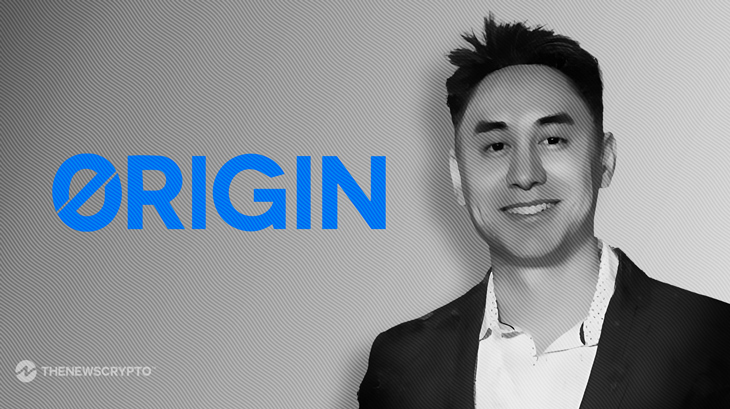Building in crypto is one thing – but few have managed to persist through the turbulent market cycles and unexpected obstacles. It takes a rare breed of vision, grit, and resilience to succeed in one of tech’s most rapidly evolving asset classes.
Origin Protocol has embodied these principles since launching in 2017. The project’s robust DeFi ecosystem and breakthrough NFT infrastructure have cemented Origin’s standing as one of crypto’s most relentless innovators.
We sat down with co-founder Matthew Liu to shed some light on his six year journey building disruptive products at the forefront of blockchain.
Q: Can you tell us about your experience in crypto before Origin Protocol?
Matthew Liu: I started dabbling in Bitcoin around 2012, but unfortunately didn’t take it very seriously. It was through a series of fortuitous accidents that I learned about the Ethereum crowdsale in 2014. I ended up investing in Ethereum’s crowdsale for fun, although I didn’t fully understand the ramifications of the technology at the time. It proved to be a serendipitous decision.
Then in 2016 when Ethereum started picking up some traction in the developer community, I started paying attention. It actually took me about two weeks to actually figure out how to unlock my wallet. The original Mist desktop wallet released by the core developers was extremely buggy. After unlocking my wallet and realizing my small investment had ballooned in value, I realized immediately that I needed to learn more. Why were developers all over the world excited about blockchain technology? I dove head in, and never looked back. I realized that if Ethereum actually succeeds in what it promises, it can transform complete industries within the internet. We’re not talking about just one or two verticals.
From there, we started diving deep into crypto. We built some trading bots and portfolio trackers, but eventually, we realized that there’s a way to make a larger impact. And so that’s how we started initial idea exploration about what technology we wanted to build and eventually landed on Origin Protocol.
Q: Tell us about Origin Protocol’s founding and original vision.
I started in crypto full-time in 2016. My co-founder, Josh, and I were really interested in the tangible problems that could be solved with blockchain technology. That was when we came up with the opportunity to disrupt traditional marketplaces. There are many problems with web2 marketplaces, including egregious fees and censorship, and we thought marketplaces and exchanges could be done better on the blockchain. That was the initial genesis for Origin.
Origin Protocol originally allowed anyone to buy or sell anything on-chain. The first lesson we learned is that it was also not very practical for the time. The marketplace protocol we were building was too early; Ethereum was still in its very nascent stages.
Disruptive ideas are built off enabling technologies; in this case, the enabling technology is Ethereum. So we looked at the current capabilities of Ethereum and thought about what the “adjacent possible” could be. We examined what building blocks were already in place, and what’s possible adjacent to them.
That’s where today, through a series of pivots, we’ve evolved our sets of products to be more complementary with existing crypto natives that are in the space, the early adopters, and we’ve progressively learned that it’s too early to focus on mainstream use cases and instead we should be focusing on highly motivated users that have urgent problems to solve today.
Over time, we saw protocols like Uniswap do really well because they focus on crypto-native use cases. We’re big subscribers to Paul Graham’s ideas around building well-shaped ideas, or Chris Dickson’s notes around finding a thin edge of the wedge.
Q: Can you tell us about Origin’s 2017 ICO?
Origin started in the 2017 cohort. We chose to not do an ICO in the traditional sense; instead we had what we called an advisor round, which was essentially our seed round. Following that, we had a strategic round which served as our series A. We intentionally wanted to raise from a very global and diverse set of investors.
We also didn’t want any particular token purchaser to have an outsized share and control of the protocol because we wanted it to be sufficiently decentralized. We manually onboarded, with full AML/KYC checks and accreditation, over 200+ entities and individual token purchasers. Overall, we had something like 800+ participants before launching our token.
In addition, we made sure our token had clear utility and use cases for a year before allowing the transfer or sale of the token.
Our goal has always been to be as compliant as possible, and we aspire to be long-term good actors in the space. There are too many projects focused on the short-term, trying to chase financial gain over impact. That’s the opposite of how we operate. We want to lead with user-centric products that solve problems and let value creation happen over time.
Q: Origin Ether has rapidly grown in TVL this year. To what do you attribute this success?
Origin Ether is the right product for the right market at the right time. There’s a lot of activity right now around ETH staking and liquid staking tokens (LSTs). We saw an opportunity here – there’s a diverse number of LST providers and LSTs. A lot of them are fairly fungible and not differentiated, but that fragmentation is also an opportunity.
That’s why we launched OETH less than half a year ago. It’s an LST aggregator that’s able to aggregate and enhance yield through the top LSTs: Lido’s stETH, Rocket Pool’s rETH, and Frax’s frxETH. OETH has been able to offer anywhere from 1.25x to up to 2x the APY that the LSTs themselves are able to offer. With minimal additional smart contract risk, adoption has gone quite well.
We’re at about 45,000 ETH in total value locked, and we think the sky’s the limit. I think one of the really interesting things about what we’re trying to do with OETH is not only generate higher yields, but make OETH a composable money Lego across DeFi. In the upcoming months, you’re going to see OETH integrated with a bunch of different protocols from CDPs to money markets to leverage platforms.
Q: What’s next for Origin Ether?
One of the things that is really exciting to the Origin team right now is this concept of rehypothecation. This involves taking idle capital across AMMs, money markets, and potentially even bridges, and figuring how to make use of that capital to earn extra yield via OETH. Capital can be used for multiple purposes in these cases. And so that’s another expansion area for OETH that we’re really keen on in the next couple quarters.
Q: What’s the best part about building on Ethereum in 2023 that wasn’t around in 2017?
The infrastructure is just so much better across all different parts of the stack. Ethereum layer one is a much stronger product. It’s more secure and decentralized, but also the core mechanics of validator rewards and burning gas fees are all really cool.
That is actually attracting a lot of developers building additional infrastructure and dapps across Ethereum. With all these building blocks, it makes it easier for us to build products that engage end users.
There are all these other DeFi protocols that we can now integrate with or leverage. There’s just a lot more user understanding of how all this stuff works. And there’s also a lot more acceptance for decentralization.
Q: What has you most excited for the next six years of building at Origin Protocol?
I always say that one of the most exciting things about being in this industry are the unknown unknowns. We, as entrepreneurs, all like to paint a vision for the future, but the most impactful innovations are often the most unexpected and come up organically as we respond to user needs and pain points.
Oftentimes I think about how some really great entrepreneurs have approached their companies, and when they first got started it was not immediately obvious that they were going to build these transformative, generationally impactful companies. If you look at Mark Zuckerberg in the early days, his main goal was to build the world’s best college directory. He had no idea he would end up building the world’s social graph, a developer platform that powers millions of apps, and early incarnations of the metaverse.
A lot of value creation and subsequent value capture happen in the later years of a company or project. They often happen in years 7, 8, 9, and beyond. That’s what’s really exciting. It’s going to require some zigging and zagging on the way, but I’m very bullish on focusing on this long-term, compounded growth.
In such a dynamic space, it’s rare for protocols to have as much history as Origin Protocol. Matthew Liu’s insight into Origin Protocol’s past, present, and future not only sheds light on the company’s strategic pivots but also encapsulates the spirit of perseverance that defines the crypto space.
As we wrap up our discussion, it’s clear that Matthew Liu is building for the long haul. With Origin Protocol’s unique positioning as a pioneer within Ethereum’s ecosystem, the team has unique insights that can be instructive for others building towards a decentralized future.







